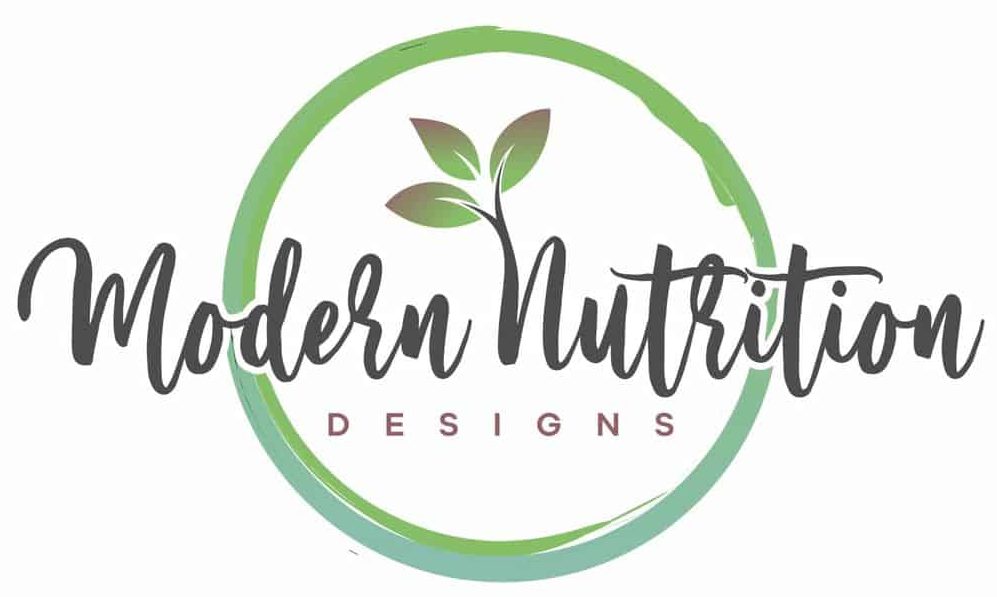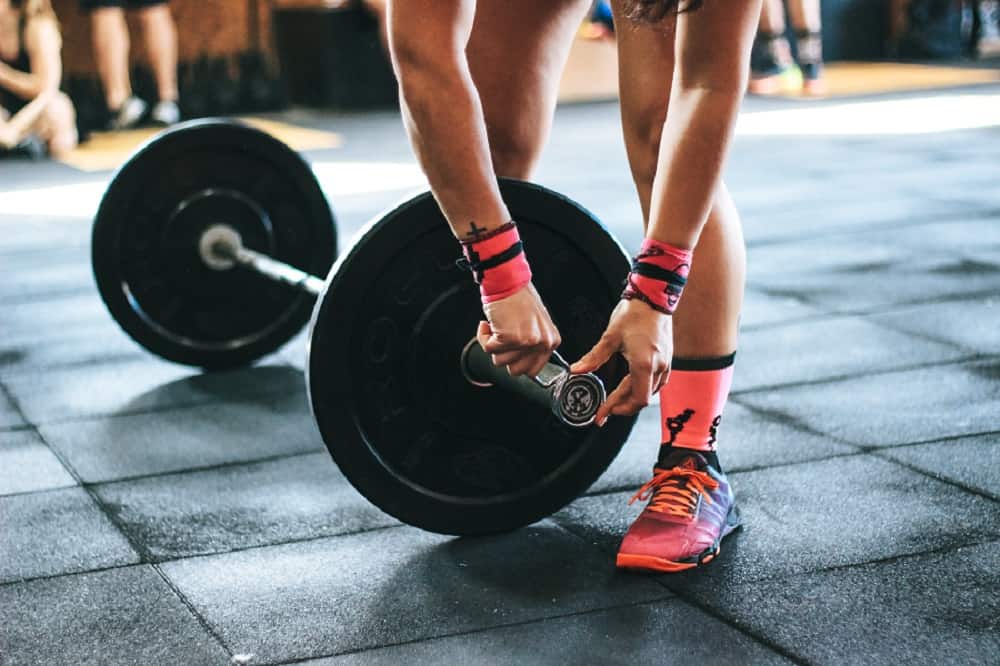Plant-based diets are so effective for weight loss that some actually find themselves losing too much weight when undergoing the transition. This may be particularly true for nursing mamas, endurance athletes, and people with unusually efficient metabolisms.
The most efficient way to gain healthy weight on a plant-based diet is to build lean muscle while tailoring your nutrition accordingly. Specific exercises and foods work with your speedy metabolism to improve body weight. Food preparation techniques such as dehydrating & using dry heat also aid in weight gain by increasing the overall calorie load.
Most weight gain diets focus on animal protein and reducing carbs, but I am going to show you how to put on healthy plant-based pounds with ease.
For a condensed version of this list feel free to view my corresponding YouTube video embedded below:
1. Eat more cooked foods
By cooking your plant foods you are actually increasing their bioavailability, or their ability to be absorbed and utilized by the body. This is due to the damage cooking places on the cell walls of your whole foods.
By compromising the integrity of these walls you are allowing the body to digest, store, and mobilize nutrients more efficiently.
In all, you are using fewer calories to metabolize the energy you are taking in by cooking your foods prior to consuming them.
Consuming lots of fresh fruits and veggies are excellent for your health and longevity, but they hold very little calories. When trying to put on weight it’s important to focus the majority of your calories coming from cooked plant foods.
It’s still important to incorporate raw fruits and veggies into your daily meals, just eat fewer of them during your attempts to increase body mass.
A great way to eat these foods in a way that maximizes your caloric intake is by processing them first. I’ll talk more about this in the next section.
On a side note, wet cooking is always more healthy than dry cooking. For instance, steaming, boiling, and pressure cooking are preferred over grilling, baking, roasting, or broiling.
Wet cooking preserves more nutrients by cooking foods at lower temperatures, while dry cooking damages the nutrients at higher temps. Dry cooking also places more oxidation, and acrylamide formation on your meals.
2. Lightly process your food
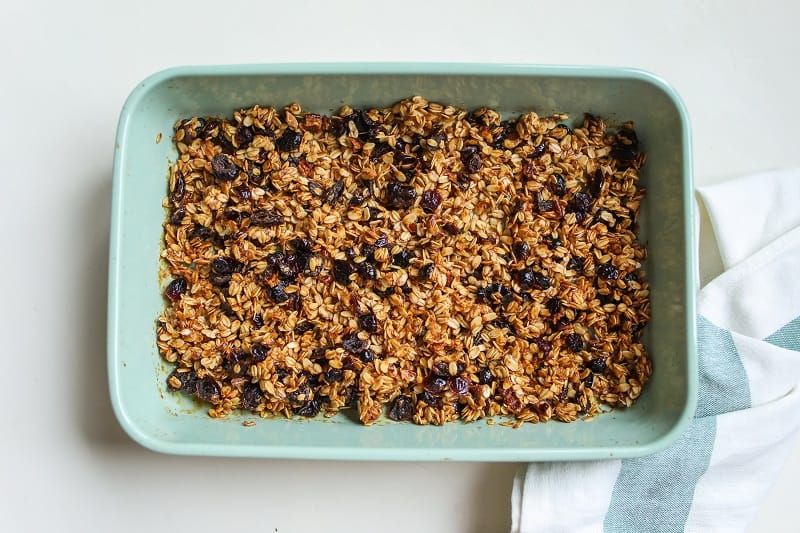
The more you dry, extract, pound, pulverize, blend, cook, or otherwise process your food, the more you are increasing the calorie density of that item.
As I briefly mentioned above, the more you compromise the integrity of the original plant structure the more you increase the bioavailablity of its nutrients.
This includes all macro- and micro nutrients such as, fat, carbs, protein, vitamins, minerals, antioxidants, and other phytonutrients. This is not always the case for all of these nutrients, but for it’s a general outcome.
During processing, you also break down the fibrous plant walls allowing more nutrients to be taken in and stored by the body. The more processed the food becomes the smaller and more digestible each particle becomes.
There is a fine line, however, between minimal processing and junk-food processing. I am recommending light manual processing, as in blending, dehydrating, juicing, wet cooking, mashing, mixing… these types of things.
I am certainly not recommending potato chips and soda. That would be the extreme end of the processing spectrum.
We want to stick to more healthy forms of food processing such as:
- smoothies
- hummus
- dehydrated fruit
- dressings, dips, sauces
- pasta noodles
- oatmeal
- tahini
- nut & seed butters
- whole grain breads
- crackers
- granola
- whole-grain cereals
Try to incorporate as many of these minimally processed options into your regular meals and snacks as you can.
Grind up some chia, hemp, or flax seeds and put them in your oatmeal or smoothies. Add noodles or other whole grains to your soups and stews. Pour a homemade tahini dressing over your stir fry or other cooked dishes.
Nut and seed butters go great on fresh or dried fruit, veggies, and bread. You can also use them in sauces or with smoothies.
Get creative! There are numerous ways to enjoy these plant-based convenience foods for added calories throughout your day.
3. Focus on foods with high-calorie density
This tip may seem obvious, but not many people are aware of the calorie density found in much of the food they eat.
Fruit and non-starchy veggies are obviously at the low end of the scale with nuts, seeds, and oil at the opposite end. But it may help to re-frame your focus and your thinking about food in this hierarchy while attempting to put on body mass.
Below is a general table filled with the major foods you eat on a plant-based diet and their respective calorie contents.
Although oil is not typically included in healthy plant-predominant diets, I placed it in the table for those who choose to incorporate it into their meals.
Just keep in mind oil is pure fat. All the other nutrients have been stripped away so you will gain very little by means of fiber, protein, vitamins, minerals, carbohydrates, etc. Just pure liquid fat.
| Plant food | Calories per pound |
|---|---|
| Non-starchy Veggies | 100 |
| Fruit | 300 |
| Potatoes, Corn, Squash, Oats | 400 |
| Whole Grains, Rice, Pasta | 500 |
| Beans & Legumes | 600 |
| Avocados | 750 |
| Bread, Bagels, Wraps | 1400 |
| Dry Cereal | 1600 |
| Nuts, Butters, Seeds, Tahini | 2800 |
| Plant oils | 4000 |
Now, as you can see from the table, your major calories should be coming from foods like:
- potatoes
- whole grains
- pasta
- rice
- corn
- squash
- oatmeal
- beans
- lentils
These foods provide plenty of calories with high nutrient-density. In other words, you are able to take in a decent amount of calories while still obtaining all your essential nutrients.
You get the best of both efforts, weight gain & health.
These plant foods are also very versatile. You will easily be able to mix and match different varieties with different cuisines.
A lesser amount of your calories should come from the following:
- Non-starchy veggies
- Fruit
- Avocados
- Whole-grain Bread
- Non-commercial Cereals
- Nuts, seeds, & Butters
These foods are also healthy plant foods, they are just more healthy in smaller quantities. For instance, avocados, nuts, and seeds are packed with an array of micronutrients, but they also contain large amounts of saturated fat.
Whole-grain bread and dry cereals can also be healthful choices to help you gain weight, but they are more heavily processed than the foods listed in the first list.
4. Keep your cardio light

This may be a challenge for some health-conscious readers because I know how much I enjoy my heavy cardio.
But that doesn’t change the fact that heavy cardio burns heavy calories and we are trying to minimize the calories out side of the equation.
This doesn’t mean, however, you should stop all cardiovascular exercise and general physical activity.
A walking regimen is great for cardio health, and you won’t burn an overabundance of calories while doing so.
Strive for at least 20 minutes per day most days of the week.
Yard work, dancing, and chores around the house are more great ways to stay active while reducing your calorie output.
Leisurely bike rides and playing with your kids may also suit your activity needs.
5. Adjust your strength training exercises
Building muscle is the most important step for gaining healthy weight. Anyone can gain weight by eating ice cream and cheeseburgers.
That is not our goal, however. We are aiming for healthy, lean weight gain that only comes with strategy and hard work.
If you are not familiar with strength training exercises that’s okay! I will walk you through a basic resistance training regimen to get you started.
First, it is important to incorporate one to exercises for each major muscle group. You can do a full-body workout, but I choose to split upper and lower body exercises to get the most out of each workout.
Basically, by splitting up your muscle groups you can place more emphasis on each area you are working. For instance, your reps will become more slow and deliberate. The perfect combo for creating lean muscle mass.
You will also be able to use heavier weights because your body will be provided more sufficient recovery time with alternating workloads.
Those are the two key factors for building lean mass:
- Slow reps
- Heavy weights
Focus on working each muscle group one to two times per week. If your muscles are not fully recovered in between workout sessions then skip a session.
It’s important to give your body time to rebuild and recover sufficiently before returning to the gym.
You also don’t need a lot of equipment for these exercises if you prefer not to get a gym membership. Just be sure to have enough free weights on hand to do two to three different exercises per muscle group.
The major areas of focus on upper body sessions should be your:
- upper back
- lower back
- pectorals
- biceps
- triceps
- shoulders
The major areas of focus on lower body sessions should be your:
- quadriceps
- hamstrings
- glutes
- abdominals
Start with larger muscle groups and exercises that work multiple muscles first. For example, a push-up predominantly works your chest, triceps, and shoulders so this exercise should be completed near the start of an upper body session.
After completing each set of muscle movements, you should fully reach muscle failure, or fatigue. So be sure to use a weight heavy enough to reach this state.
The goal is to leave the gym feeling like you can barely turn the steering wheel or push the gas peddle in your car.
After a few weeks, your routine will become automatic and you will no longer dread your workouts.
6. Increase portion sizes and frequency
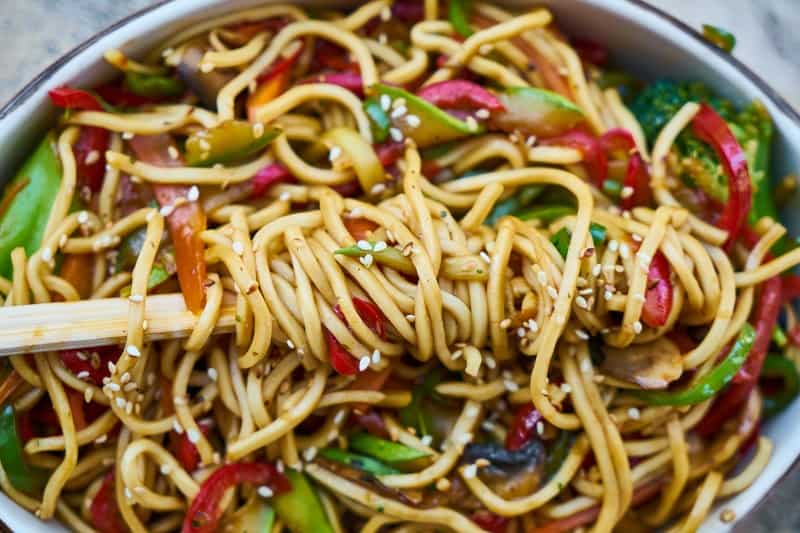
Too often people are skipping meals and ignoring their hunger signals. When attempting to add body mass you need to incorporate regular substantial meals into your day.
That means at least three large meals and several snacks whenever applicable.
Your main meals should center around whole-grains, potatoes, and legumes. This includes pastas, tortillas, and bread. Just be sure the main ingredient reads “100% whole-grain”.
If you are having trouble fitting three solid meals into your busy day be sure to include more of these minimally processed items into the meals you are able to consume.
After a large breakfast, lunch and dinner you should include high-calorie snacks such as whole-grain toast with avocado or nut-butter, chia seed pudding, dried fruit, nut mixes, and granola with lots of nuts and seeds.
This may seem like too much food to fit into one day but after a few days your stomach will begin to stretch to accommodate larger, more frequent portions.
That being said, you may experience a bit of discomfort and bloating early on, but that will soon pass after your body begins to anticipate the added calories.
Remember, plants are naturally low in calories so you should feel comfortable eating larger portions than you would on a highly refined or omnivorous diet.
7. Bring your food with you
Occasionally meals and snacks get missed throughout the day when something urgent or unexpected comes up and you are no longer able to carry out your regular routine.
This is easily overcome by keeping high-calorie snacks in your vehicle, office, locker, or personal bag that you generally keep close by.
Store things like trail mix, whole grain crackers, or some homemade granola.
These snacks will store for weeks or even months at a time if necessary. They will also provide plenty of calories for those unexpected occasions.
Get creative! Snacks can include any mixture of the following:
- dried fruit: cranberries, dates, apricots, pineapple, mango, coconut, papaya, bananas, apple, raisins, etc.
- nuts: cashews, walnuts, peanuts, almonds, Brazil nuts, pine nuts, pecans, filberts, etc.
- seeds: pumpkin, sesame, chia, hemp, flax, etc.
- cocao nibs
- lightly processed whole-grains
- maple syrup
- seed or nut-butters
A little extra planning and preparation will go a long way for adding additional body weight.
Traveling is often a challenging venture for vegans or otherwise plant-based followers who are attempting to add some extra pounds.
As long as you have the foresight to pack your favorite minimally processed snacks you should have no problem continuing your diet while away from home.
8. Smoothies for snacks instead of meal replacements
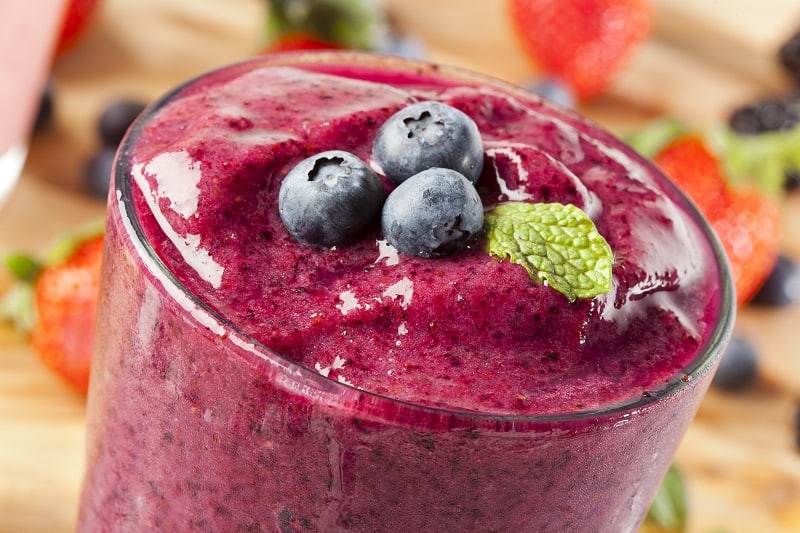
People have a tendency to think of smoothies as a meal opposed to a snack. But when you are looking to achieve healthy weight gain these blended drinks are an great way to pack in additional calories.
As I mentioned in the “Lightly process your food section”, the more you compromise the integrity of the original plant structure the more you increase the bioavailablity of its nutrients.
In other words, the more you alter a food from its original form the more you concentrate the calories, along with other various nutrients depending upon the method of processing.
How does this information pertain to fruit and vegetable smoothies?
By placing your plant foods in the blender and churning the substance into a fine liquid you are significantly compromising the cell walls contained within the plants.
In turn, you are liberating the nutrients found within the cells. This creates a greater absorption rate when digested by the body.
Ultimately, the blender is doing all the work for you, which significantly decreases the calories needed to digest the smoothie ingredients.
The ingredients placed in the blender and then liquified could never be chewed to a similar degree of liquidation. There is nothing in nature that would pulverize and blend the foods used in the smoothie to this same degree.
Our bodies are equipped for slow gradual digestion. When we skip the chewing altogether and go straight to the absorption phase the signal from the digestive organs to the brain are delayed.
This allows you to take in more calories than you otherwise would have in the case where you simply chew each ingredient.
Smoothies don’t usually have a lot of high-calorie ingredients, but you can easily add them.
Nuts and seeds, or even nut and seed butters are great sources of calories that may add flavor to any smoothie.
I like to add the following to my smoothie concoctions for added calories:
- cashews
- almonds
- walnuts
- chia seeds
- flax seeds
- hemp seeds
- oil-free peanut butter
- oil-free mixed nut and seed butter
You can also add avocados, frozen or fresh bananas, dried fruit, or beans to green smoothies.
Here is one of my favorite smoothie recipes:
- 1 15 oz. can of pumpkin puree
- 2 Tbsp peanut butter
- 3 Medjool dates
- 2 Tbsp flax seeds
- 1 frozen banana
- 1 cup of unsweetened almond milk
9. Don’t skimp on the carbs!
Cutting out carbs intentionally, or forgetting to include them is a common mistake that can lead to unsuccessful attempts to gain lean body mass.
Our bodies run on carbohydrates. They are our body’s fuel. When our carbohydrate reserves become depleted the body converts fat and muscle into useable energy sources.
It is very difficult to gain weight when you are forcing the body to burn unnecessary fat and lean body mass due to a carbohydrate deficiency.
Converting fat and muscle proteins into usable fuel is a very inefficient process because you must burn calories in the process.
I realize subconsciously we all posses the “carbs are bad” impression after being exposed to a lifetime of heavy marketing schemes for low carb diets, but carbs are critical for human nutrition.
This macronutrient should, in fact, provide the vast majority of your daily calories.
When I refer to carbs, I am specifically talking about carbohydrates from whole or minimally processed whole plant foods.
Some of the most nutritious foods on the planet consist largely of carbohydrates, such as:
- Rice
- Quinoa
- Sweet potatoes
- Bananas
- Blueberries
- Apples
- Mangoes
- Beans
- Lentils
- Oats
- Peas
- Buckwheat
- Dates
There are carbs, however, you are better off leaving out of your diet. These include the highly refined and processed carbohydrates like the following:
- pastries
- pizza crust
- white bread
- doughnuts
- commercial cereals
- breakfast/energy bars
- candy
- cookies
- cakes
- pancakes
- biscuits
- bagels
- soda
These high-carbohydrate foods should be minimized or excluded altogether when attempting to gain healthy lean body mass.
Highly refined carbs can disrupt a number of normal metabolic processes such as insulin sensitivity, satiety mechanisms, sleep disturbances, fat storage, and nutrient deficiencies when consumed regularly in large quantities.
Replenishing your carbs are especially important after your workouts and when you break your fast every morning.
10. Skip the caffeine
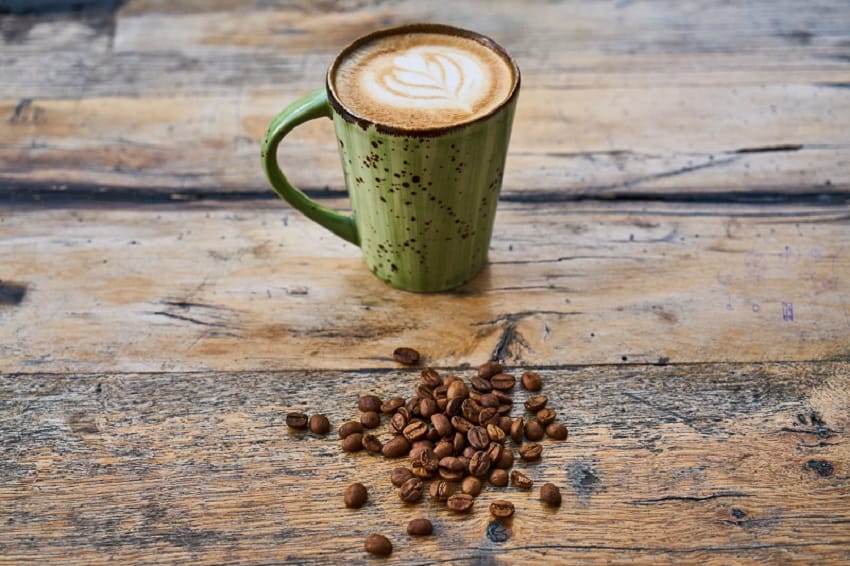
Caffeine is a well-known stimulant and appetite suppressant. Just one cup of coffee can reduce your appetite for several hours.
Gaining weight on a plant-based diet can be particularly difficult when you have no appetite.
So how do we reduce or even cut back on our caffeine intake? By getting the majority of your calories from whole plant foods!
I know, it sounds too easy or too good to be true, but it’s not. Increased energy and vigor are well established side effects of a clean plant-based diet.
Just two weeks on a plant-based diet has been shown to increase mood, energy, and overall productivity levels of those following a strict plant-based, vegan diet.
How can the food you eat increase energy levels? For starters, whole plant foods are rich in antioxidants which reduce the amount of free radicals in your body, in turn leading to less cellar damage.
Plant-based diets have also shown a significant improvement in arterial function which may lead to increased blood flow throughout the body. This ultimately leads to less fatigue and higher mental acuity.
Vegans have also shown to have improvements in sleep quality and duration which can lead to increased energy during the day.
Cutting out or even reducing caffeine intake is no easy task. Caffeine is a drug. And like all drugs there are uncomfortable withdrawal symptoms experienced when reducing the quantity consumed.
The best way to reduce your dependence on caffeine is to reduce your intake gradually throughout the weeks or even months. If you are a heavy coffee drinker cutting back or getting rid of the habit altogether may take more time.
Try removing anywhere between a half cup and a full cup of coffee each week. The headaches and discomfort associated with caffeine withdrawal can be significantly minimized by using this strategy.
Soon, you will build your appetite back up allowing you to ingest more calories and gain lean body weight more easily.
11. Eat later in the evening
This strategy may seem counter-intuitive but I assure you there is science behind it. Studies reveal that eating the same meal for dinner instead of breakfast will yield a higher calorie intake!
Dr. Greger reports on these findings in the video below:
Your body is prepped and ready to quickly and efficiently metabolize your calories in the earlier portion of your day, but towards the end it seems your ability to process further calories slows down significantly.
People use the breakfast like a king, lunch like a prince, and dinner like a pauper analogy to assist in weight loss. When your goal is to put weight on, however, you simply want to reverse the original meal order.
For instance, you may eat a piece of fruit in the morning with a handful of nuts, an avocado and hummus sandwich for lunch, and a great big sweet potato with salad topped with tahini dressing, beans, and rice for dinner.
It may take a few days or more to train your body to eat this way, but you will eventually adapt to the new norm.
Most people in developed countries already consume their calories in this fashion. Dinner has historically been the major calorie load in my culture.
People are so busy with the morning shuffle that they usually skip breakfast, eat a small meal at their lunch break, and then load up on high-calorie junk from some fast food delivery place in the evening because they are too worn out to cook themselves something more nourishing.
I’m not suggesting this version of calorie loading regarding the greasy fast food. What I am suggesting is establishing a similar portion of calorie distribution, but with whole, healthy, high-calorie plant foods.
Since your metabolism will begin to slow as the day proceeds, eating later in the day will inevitably lead to calorie storage as opposed to calorie usage.
12. Eat more dried fruit
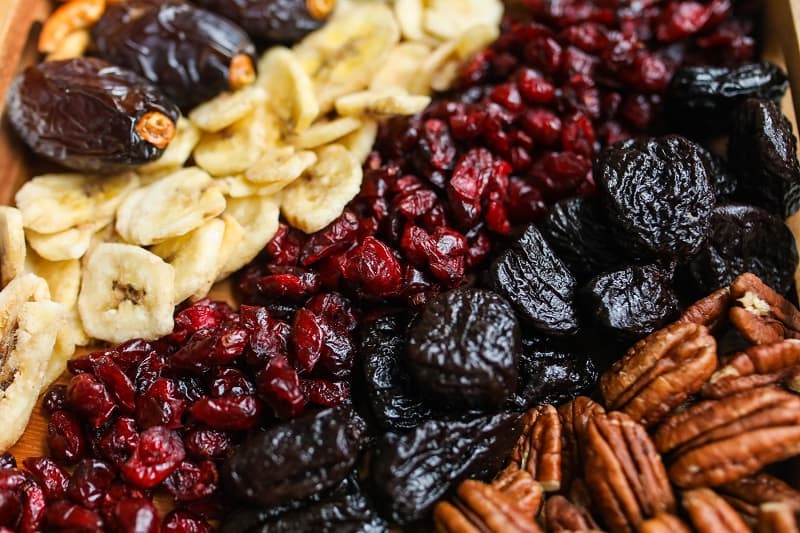
People underestimate the amount of healthy calories found in dehydrated fruit. They are much more calorie dense than their fresh counterparts.
Below is a table displaying some of the most calorie rich dried fruits:
| Fruit | Calories in Fresh Fruit | Calories in Dehydrated Fruit |
|---|---|---|
| Cherries (1 cup) | 97 | 533 |
| Apricots (1 cup) | 74 | 212 |
| Banana chips (1 cup) | 133 | 480 |
| Grapes/Raisins (1.5 oz.) | 29 | 129 |
| Dates (100 g) | 145 | 280 |
| Prunes (1 cup) | 76 | 536 |
| Figs (1 oz.) | 21 | 70 |
| Currants (1 oz.) | 51 | 79 |
The moisture content in fruit reduces with ripening and drying. When the moisture level decreases, the natural sugar in dates concentrates, which enhances caloric content.
Dried fruit is particularly high in carbohydrates due to the high sugar concentration. But the absorption rate and capacity of these sugars are offset by the fiber preserved in these foods.
So even tough they are concentrated in natural sugars you will not get the sudden surges of insulin released into the bloodstream as you normally would with sugary foods.
Some dried fruits are sweetened with added sugar, but many are simply dried or dehydrated with no additives or preservatives, so nothing is put in, and the only thing that’s taken away is water.
Be sure to read the ingredients list closely because the majority of dried fruits also contain a significant amount of oil.
Oil is pure liquid fat and is associated with a number of health risks. So, although it does contain more calories per pound than any other food on the planet, these are not healthy calories.
You are better off acquiring your calories from healthier whole food sources such as nuts, seeds, and avocados.
Some easy ways to incorporate more dried fruit into your diet are to sweeten your meals and snacks with them.
For instance, green smoothies are great with a few added dates to offset the bitter flavors of the veggies. Raisins are a tasty way to sweeten your oatmeal, and banana chips, dried mango and pineapple can be included with nuts and seeds for a healthy trail mix.
Many of the baked goods I make are sweetened naturally with either soaked dates or date paste. Both are acceptable variations. The paste is just more malleable than the raw dates.
Goji berries, dried pomegranate seeds, and barberries have the highest antioxidant content per ounce. Adding these to granola, cereal, and smoothies will provide a number of health benefits.
13. End your workouts with added protein
Plant-based diets provide plenty of protein needed by the average person. There are certain populations, however, that require a slight increase in protein needs given the increased rate at which they metabolize these nutrients, or the decreased absorption rate.
Athletes are the former case. They utilize many of their protein reserves so quickly that they must obtain a higher quantity than most people to carry out regular metabolic processes.
The Academy of Nutrition and Dietetics, Dietitians of Canada, and the American College of Sports Medicine recommend 1.2 to 2.0 grams of protein per kilogram of body weight per day for athletes, depending on training.
The average person requires .8 grams of protein per kilogram of body weight per day. So there is not a large difference between the protein needed to sustain athletic performance and that of a couch potato of the same age, weight, and height.
The additional protein required by athletes is used to build and repair muscles.
Many athletes, especially body builders, focus their intake too much on high-protein foods or supplements while neglecting carbohydrates and fats also needed by the body.
You should be getting a balance of these macronutrients passively with a plant-based diet.
You may try adding some lentils, beans, nuts, seeds, or soy foods to your post-work out meal or snack. These foods will easily provide the added proteins necessary to rebuild muscle tissue.
It is completely unnecessary and unhealthy to incorporate protein powders, drinks, or supplements into your post-workout regimen, however.
Protein powders, as with other non-FDA approved dietary supplements, rarely contain the ingredients nor the appropriate quantities of those ingredients listed on the packaging.
Often you will find harmful contaminants and fillers in commercial protein supplements.
You will also miss out on all the other nutritious components found in foods naturally high in protein. Instead of soy protein isolate, try some tofu, tempeh, or edamame.
14. Meal prep
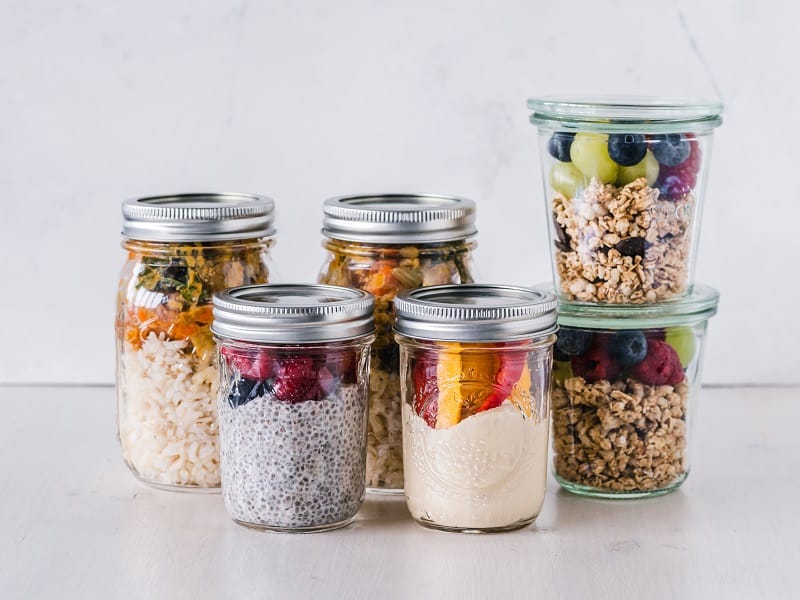
Last but not least, meal prepping is your best friend when it comes to carrying out a healthy weight gaining regimen on a plant-based diet.
Preparing your meals and snacks ahead of time will ensure you will have access to the proper foods needed to accomplish your body mass goals.
The work weeks can be packed with getting kids ready for school, driving to work, picking up the dog at daycare, and whatever else you may have going on outside of a full-time job or school schedule.
It is highly unlikely you will be able to find whole natural, weight enhancing plant foods on the go.
Convenience foods are hard to come by when managing your weight on an upward trend healthfully. But that’s okay, because you can easily create your own with a little extra effort.
Set aside two to three areas of your week. One designated for grocery shopping, and the following two for chopping, baking, mixing, blending, and cooking.
You should also create a list of all the meals and snacks you will be making each week, along with the ingredients needed for each. And there are your grocery items all ready to go for your weekly shopping trips.
Some easy meals to prep include pastas, soups, chili, stews, sandwiches or wraps, oatmeal, and stir fries.
After you cook or prepare a weeks worth of each meal, separate them out into 5 or so Tupperware containers to store in the fridge and/or freezer for later use.
Then when you are rushing to get to work on time, all you have to do is reach in the fridge and grab the pre-made meal containers. There is no thinking or extra effort involved. That’s what makes this plan so fool proof.
There is no time to reconsider your food choices because you have already expended money and effort to prearrange your weekly meals.
You are 100 times more likely to succeed when putting in the extra effort ahead of time.
It may seem tedious and time-consuming at first. But after you do it a few times it will become second nature. You are building healthy habits that will serve you well now, and well into the future.
Takeaways
- Gaining lean body mass on a plant-based diet may be a challenge for some given the low-calorie density foods representative of this lifestyle. This does not mean it cannot be done in a healthful manner, however.
- Tailor you diet to include high-calorie plant foods such as grains, beans, starchy vegetables, nuts, and seeds.
- The goal is not to simply gain fat! So be sure to include strength training exercises several times per week allowing days in between for rest and muscle rebuilding.
